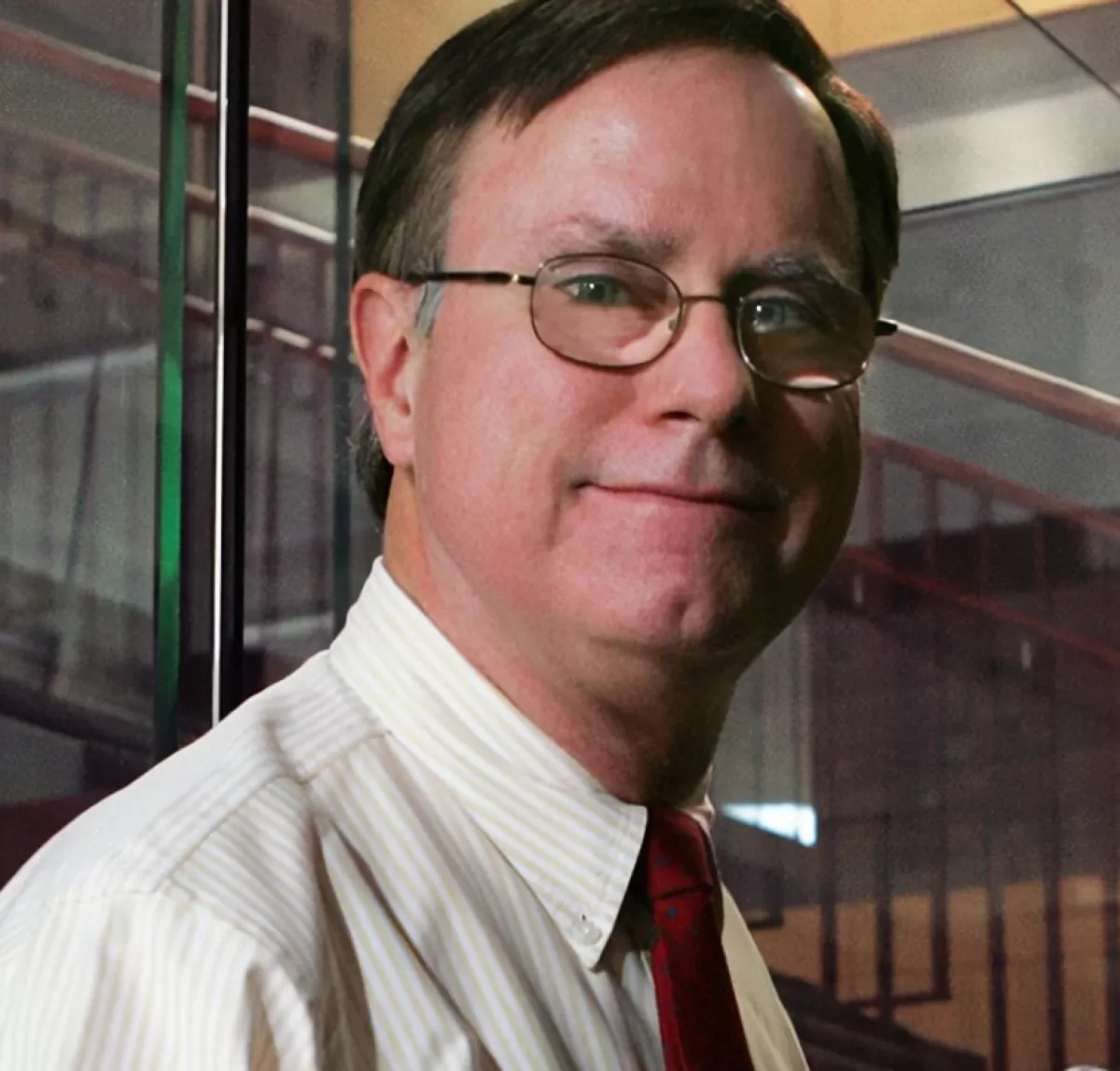- July 25, 2025
Program Notes: Choral Festival 2025
 John Koegel
John Koegel
Professor of Musicology
California State University, Fullerton
Leonard Bernstein, Mass
Composer, conductor, writer, and music educator Leonard Bernstein (1918-1990) was one of the most important musical figures of the 20th century. Like composer-conductor Gustav Mahler—his predecessor as Music Director of the New York Philharmonic, whose symphonies he helped place in the standard repertory—Bernstein fit composition into his other interlocking musical worlds. Although his output is not large, he contributed seminal works in various genres that live on in public performance and esteem. His musicals On the Town (1944), Wonderful Town (1953), and West Side Story (1957) are beloved masterpieces of the Broadway canon. His comic operetta Candide (1956), a compendium of wonderfully satirical and lyrical musical theater numbers, is frequently performed by opera houses. Chichester Psalms (1965) for chorus and orchestra is a standard in the repertory, and his three symphonies are attracting renewed interest. His Mass (1971) sums up this eclectic and varied output. It is undergoing a critical reappraisal, and is increasingly being performed today, in its original, large-scale theatrically staged version, in semi-staged adaptations, and in the shorter, concise concert arrangement that is being presented today in a somewhat reduced version.
Bernstein composed Mass: A Theater Piece for Singers, Players, and Dancers at the request of Jacqueline Kennedy Onassis to honor John F. Kennedy, the first Roman Catholic President. Mass opened the John F. Kennedy Center for the Performing Arts in Washington, D.C. on September 8, 1971, and met with both enthusiastic critical acclaim and biting censure, by music critics and Catholic clergy.
The central portions of Mass were taken from the Catholic liturgy. Bernstein and his co-librettist, Broadway composer and lyricist Stephen Schwartz (Godspell, Pippin, Wicked), wrote English-language lyrics that frame the Latin Mass sections. These added songs and choruses express the difficulty of maintaining faith at a time of social dissent. Mass also appeared while Catholic worship in the United States was undergoing a period of radical change after Vatican II. Bernstein wanted Mass to be ecumenical in its statement of religious belief, and for its music to be accessible without being ordinary. In an affirmation of that desire, the Catholic Commonweal called the work “the ultimate People’s Mass.” “It is rather a show about the Mass, about the meaning or lack of meaning of the Mass.” Conservative Catholic critics, however, viewed the work as an attack on the traditional service of the Mass and its music. Reflecting Bernstein’s Jewish heritage, the Celebrant, the central character (who can be seen as a stand-in for Bernstein himself), poses deeply personal questions of faith to God, reflecting the similar questioning of the Creator by Abraham, Isaac, and Moses. With Mass Bernstein reached beyond the boundaries of his own faith in his self-examination and questioning of God in order to find hope and peace.
The original stage version of Mass, lasting almost two hours, calls for a cast of over 200, including the Celebrant, large orchestra, dancers, boys’ and adult choirs, rock band, brass band, pit orchestra, and a large group of street musicians. Music critics such as Robert Craft in his essay “Non Credo” (I Don’t Believe) and Harold Schonberg of the New York Times attacked Bernstein for the stylistic variety that is the hallmark of Mass—its amalgamation of classical music, popular music, and musical theater—calling it a “hodgepodge” or “wild mélange” of musical styles. Highly different stylistic influences are indeed heard in Mass: the music of Beethoven, Mahler, Stravinsky, Orff, and Copland; spirituals, jazz, blues, and rock; 12-tone and atonal music; Protestant hymns; and the Broadway musical. However, this musical catholicity is a strength rather than weakness. The conflict and resolution between atonality and tonality in Mass serves as a metaphor for the Celebrant’s struggles and the conflicts and contrasts between the various musical idioms represented. Bernstein’s musical eclecticism in Mass also echoed the interest among 1960s composers and other artists in the juxtaposition of diverse materials and quotation of pre-existent artistic elements in their own works.
Instead of the large vocal and instrumental forces of the original version, the shorter version is arranged for chamber orchestra, soprano and tenor soloists, and treble and mixed choruses. However, the organ replaces the orchestra in our performance, performed by Dr. Jung-A Lee. Most of the English-texted framing lyrics written by Bernstein and Schwartz are omitted here. But most of the main structure and order of the Catholic Mass, as set in Bernstein’s original conception, is maintained—the Gloria, Credo, Sanctus, and Agnus Dei, along with the Devotions before Mass. (We omit the Kyrie in this performance.) As in Bernstein’s large-scale original, the concise version ends with “Pax Communion” and its many repetitions of the word Lauda (Praise). The Benediction (“Bless us and all those that have gathered here”) is a final plea for peace, which is the ultimate message of the work.
According to Humphrey Burton, the composer’s principal biographer: “Now that the incense has cleared, Mass can be seen to be at the very center of Bernstein’s creative work and the closest he ever came to achieving a synthesis between Broadway and the concert hall.” Burton believes that “the originality and durability of Mass have become clearer with the years.” Bernstein’s Mass is as appropriate for our day as it was at the time of its premiere in 1971.
Undine Smith Moore, We Shall Walk through the Valley
Composer Undine Smith Moore (1904-1989) is known as the “Dean of Black Women Composers” for her pioneering work. Born and raised in Virginia, she was educated at Fisk University and Columbia University Teacher’s College. She taught music for many years at Virginia State College (now University) and was extensively honored in her lifetime. Her works are undergoing a reevaluation and are increasingly being performed today. Moore was greatly influenced by African American spirituals and other forms of Black traditional music, and she was also quoted as saying that “black folk music and Bach [were] true influences” for her.
Her compositions include works for chorus, chamber ensemble, piano, as well as art songs and spiritual arrangements. Moore considered her most important work to be her large-scale oratorio Scenes from the Life of a Martyr, nominated for a Pulitzer Prize and premiered at Carnegie Hall. It is based on the life of Reverend Dr. Martin Luther King and is for chorus, vocal soloists, orchestra, and narrator. Moore’s We Shall Walk through the Valley performed on today’s concert, for unaccompanied SATB choir, is a simple and beautiful setting of the traditional African American spiritual.
Adolphus Hailstork, I Will Lift Mine Eyes
Adolphus Hailstork (b. 1941) was born in Rochester, New York, and grew up in Albany. He studied composition at Howard University, with Nadia Boulanger at the American Conservatory at Fontainebleau, and at the Manhattan School of Music. After service in the U.S. Army, he completed the doctorate in composition at Michigan State University. Besides Boulanger, his composition teachers included H. Owen Reed, Vittorio Giannini and David Diamond. Hailstork taught composition at Youngstown State University, Norfolk State University, and Old Dominion University, retiring in 2011. He is the recipient of numerous awards and honors, including the Ernest Bloch Award, Fulbright Fellowship, and honorary doctorate from the College of William and Mary.
Hailstork has written numerous choral works, including the oratorio Done Made My Vow, as well as The Carol for All Children, The Cloths of Heaven, The God of Glory Thunders, Out of the Stars, and Songs of Isaiah. His orchestral works have been performed by the New York Philharmonic, Chicago Symphony, Philadelphia Orchestra, Detroit Symphony, Pittsburgh Symphony, and other ensembles. He has also composed for piano and chamber ensembles, including Songs of the Magi for string quartet and oboe. Hailstork incorporates elements of African American writing with European compositional techniques.
I Will Lift Mine Eyes, for tenor soloist, chorus, and orchestra (accompanied here on the organ), is dedicated to Undine Smith Moore. In this work, he sets three well-known psalms (numbers 121, 13, and 23), and has commented on his inspiration: “I always go to the Psalms. What I do is select the words that at the time create a visceral response in me. I feel a connection with them. Usually I will go for imagery.” The strong harmonic language of the first movement, “I Will Lift Up Mine Eyes” (Psalm 121), suggests Hailstork’s interest in the music of Ravel, Poulenc, and Bartók. The sorrowful second movement (Psalm 13) asks repeatedly “How Long?” (“How long, O Lord, will thou forget me”?). The extended tenor solo with its angular lines soars above the texture of the accompaniment and chorus. The extended wordless chorus alternates with choral interjections asking “How long, o Lord? Both the soloist and members of the chorus are asked to improvise at times, the chorus members in gospel style. The third movement sets Psalm 23, “The Lord Is My Shepherd,” but Hailstork begins the movement with a joyous repetition of the word “Alleluia” with extended chordal exclamations and repeated rhythmic figures on the word. The chorus alternately sings the famous psalm text and the word “Alleluia,” while the tenor soloist sings the psalm text in an interlocking manner with the chorus. Throughout the three movements of I Will Lift Mine Eyes, the composer musically cycles through the emotions of grief, acceptance, and hope.
Witness hundreds of our community singers in concert at this one-time-only performance on August 17. Reserve your free ticket today.

